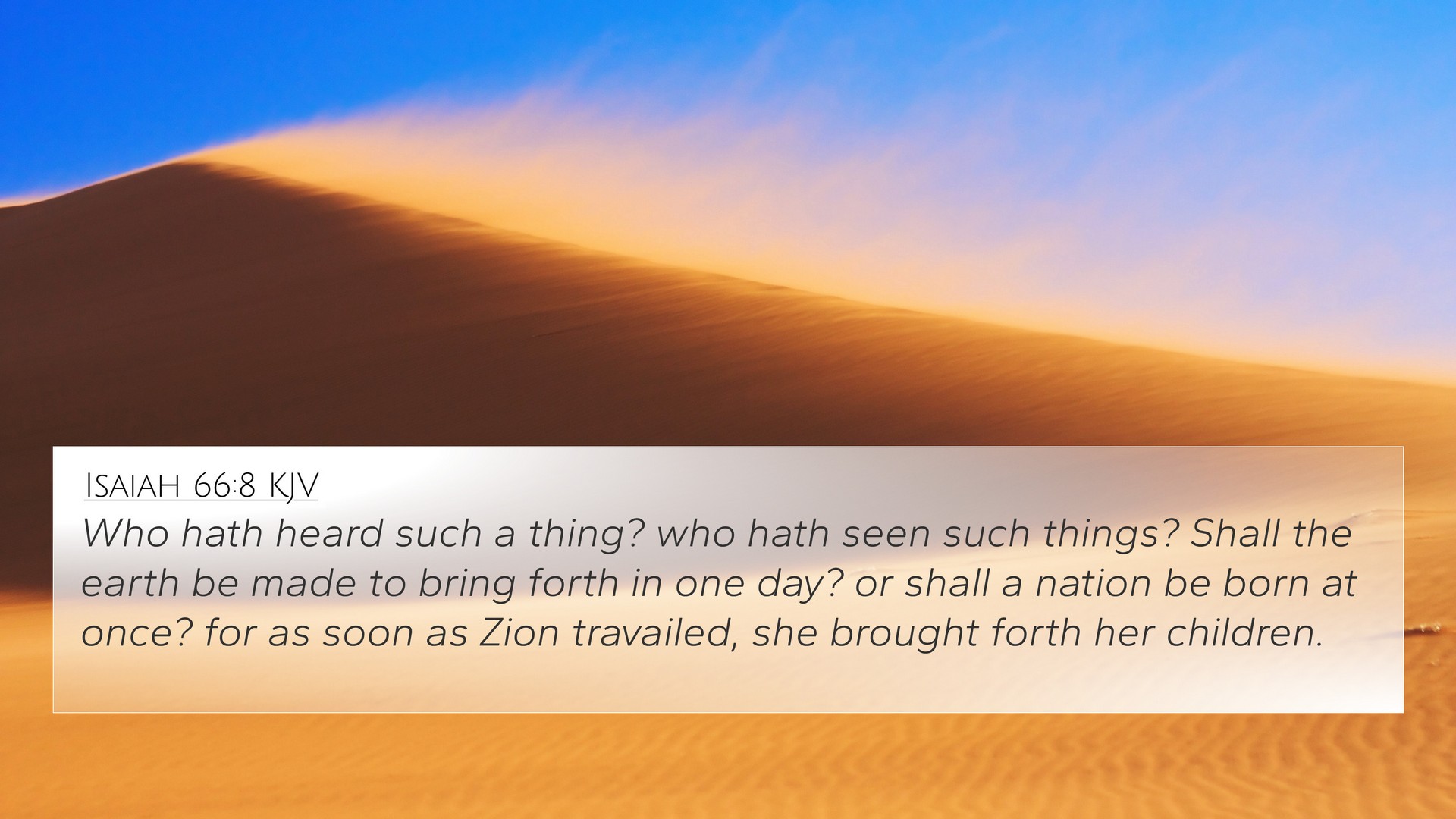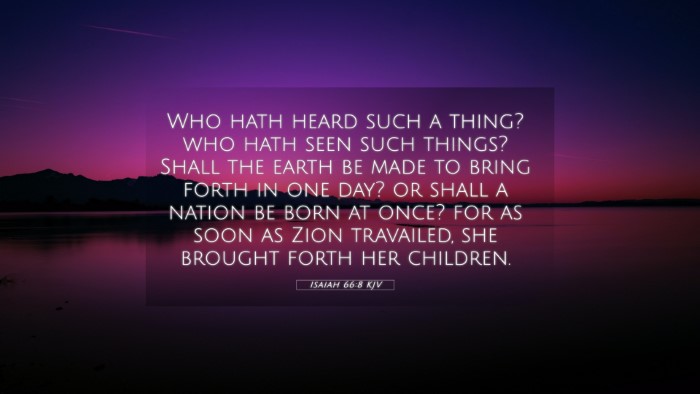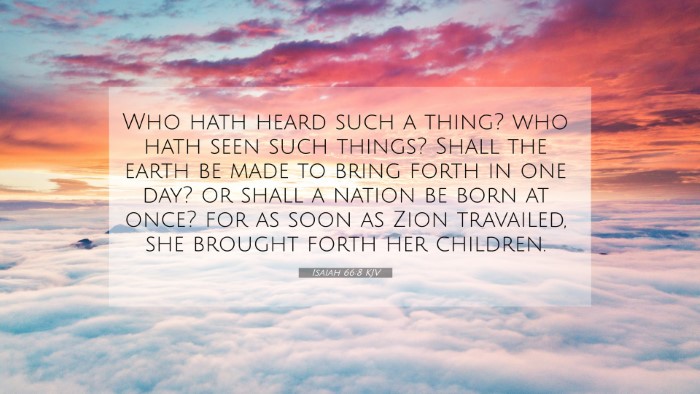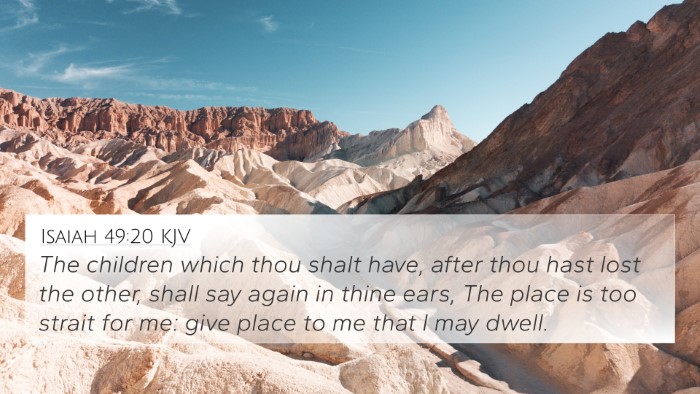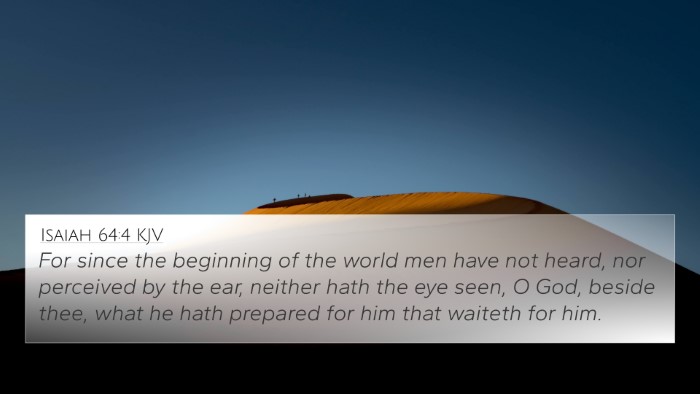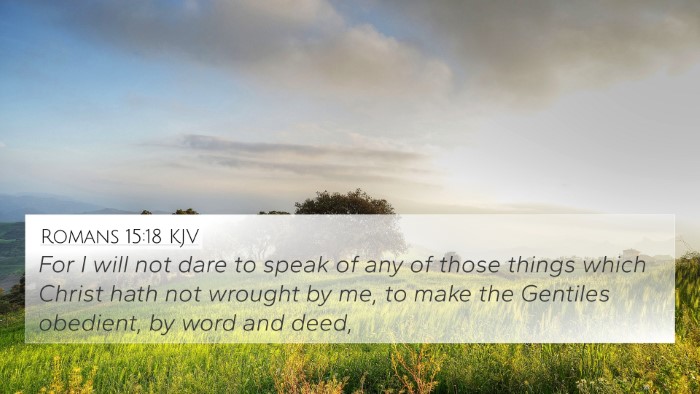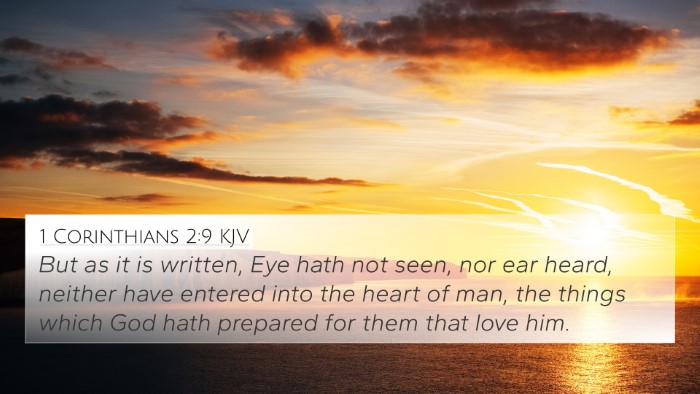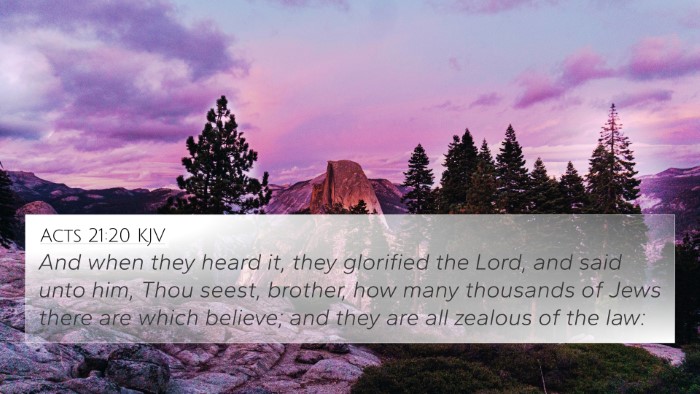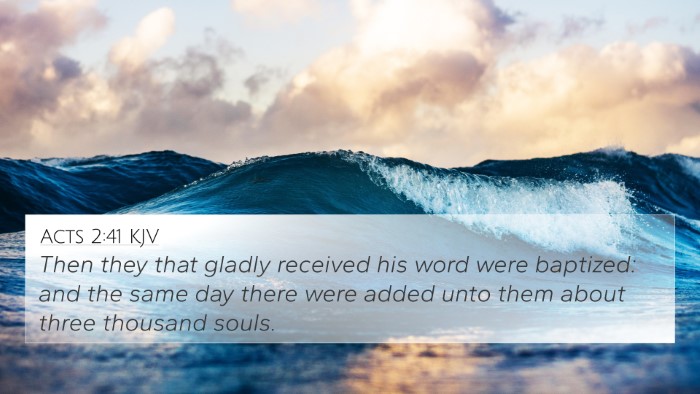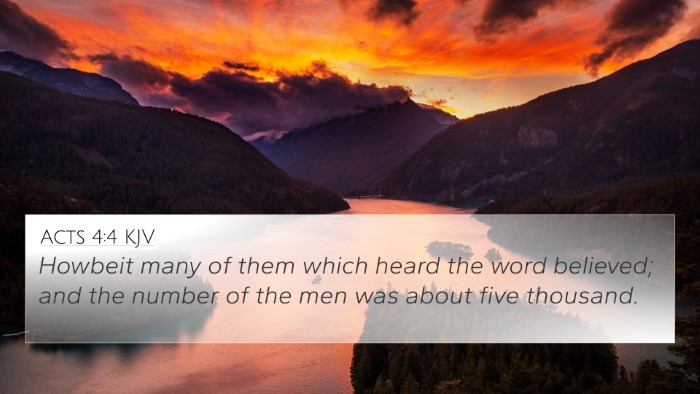Understanding Isaiah 66:8
Isaiah 66:8 states:
"Who has heard such a thing? Who has seen such things? Shall the earth be made to give birth in one day? Or shall a nation be born at once? For as soon as Zion was in labor, she gave birth to her children."
This verse captures a powerful moment in the prophetic vision of Isaiah concerning the miraculous and swift establishment of God's people, something that commentators have explored through various lenses.
Summary of Interpretations
-
Matthew Henry's Commentary:
Henry emphasizes the remarkable nature of the event described in Isaiah 66:8. He highlights the birth of a nation as an allegory for the rapid growth of God's people following their restoration. The imagery signifies not only the suddenness of Zion's revival but also the divine intervention that makes it possible.
-
Albert Barnes' Notes:
Barnes draws parallels between this verse and God's covenant with Israel. He notes that the phrase "Shall the earth be made to give birth" serves as a metaphor for the strength and vitality of God's plan, assuring the believers that even what seems impossible is achievable through divine will.
-
Adam Clarke's Commentary:
Clarke explains the dual nature of Zion, portraying her as both the literal city and a representation of the broader church. He points out that the labor and birth represent both suffering and ultimate joy, encapsulating the struggles and triumphs in the life of believers.
Contextual Analysis
Isaiah 66:8 occurs in the context of God's final restoration of Israel and the establishment of a new order. The prior verses establish the conditions under which God will favor His people, with this specific verse emphasizing the miraculous nature of their return and growth.
Cross-References
This verse connects with various other scripture passages, enhancing its understanding through contextual and thematic links:
- Genesis 49:22: "Joseph is a fruitful bough." Here, the imagery of growth and fruitfulness mirrors that of Isaiah 66:8.
- Psalms 126:1: "When the Lord brought back the captivity of Zion, we were like those who dream." This reflects a similar theme of joy and restoration.
- Matthew 24:34: "This generation will not pass away till all these things take place." The fulfillment of prophecy reiterates the connection of past promises to present realities.
- Romans 11:25-26: "Until the fullness of the Gentiles has come in, and so all Israel will be saved." Indicating the continuation of God’s covenant with His people.
- Galatians 4:26: "But the Jerusalem above is free, and she is our mother." This New Testament link reinforces the idea of spiritual rebirth and community.
- Luke 21:24: "And they will fall by the edge of the sword, and be led away captive." Alluding to the struggles preceding Zion's flourishing.
- Revelation 21:2: "And I saw the holy city, New Jerusalem, coming down out of heaven." Signifying the ultimate fulfillment of God’s promise to His people.
Connections Between Bible Verses
The connections outlined above illustrate the significance of Isaiah 66:8 across both the Old and New Testaments. Each reference complements the idea of God’s faithfulness and the miraculous birth of a renewed Zion, providing a rich tapestry of inter-Biblical dialogue.
Thematic Analysis
Thematically, Isaiah 66:8 addresses:
- Divine Intervention: The swift action of God in the birth of a nation.
- Restoration: The return and revival of Zion serving as a metaphor for spiritual rebirth.
- Hope: The promise of what is yet to come fills the believer with anticipation and joy.
- Community: The birth of children signifies the expansion of God’s family.
Comparative Bible Verse Analysis
In performing a comparative Bible verse analysis, we observe that verses across both Old and New Testament contexts serve to deepen our understanding of Isaiah 66:8:
- Comparing the promise of restoration in Isaiah with the fulfilled promise in Acts 2 reveals a continuity of God’s plan.
- Exploring the lament of the Old Testament prophets in relation to the joy found in the New Testament’s proclamation underscores the transition from sorrow to hope.
Conclusion
Isaiah 66:8 is a profound verse that encapsulates the miraculous restoration and growth of God's people. Through cross-referencing related verses and examining the thematic implications, one can gain a clearer picture of the significance of this passage within the broader narrative of Scripture. As we explore these connections, we find encouragement in the faithfulness of God, evident through His promises from the Old Testament through the New, vividly illustrating the unity and divine orchestration within the Bible.
